After joining the Film and Television Institute in the eighties to study cinematography, the first year was spent shooting still photographs, doing lighting practicals and lab work. We however watched a lot of films, argued more about them and of course dreamt of shooting our own films.
It was only in the second year that we got a chance to shoot on film. I remember my shot in the motion picture exposure practical exercise and it was a panning shot of somebody going into a building.
It was a bright day and the iris was cut down to f/22. I could barely see anything and some one shouted ‘start camera’. I was so nervous. The Arri 2c camera came alive – black and white film squeezing though the gears. Before I could get my bearings the shot was over. I wasn’t prepared for the flicker that I saw through the eyepiece. I thought my camera was faulty. My first shot in cinema was going to be wobbly. I had to wait for a week to see the results on screen.
I heaved sigh of relief when my shot came on screen. There it was – crystal clear with no flicker.
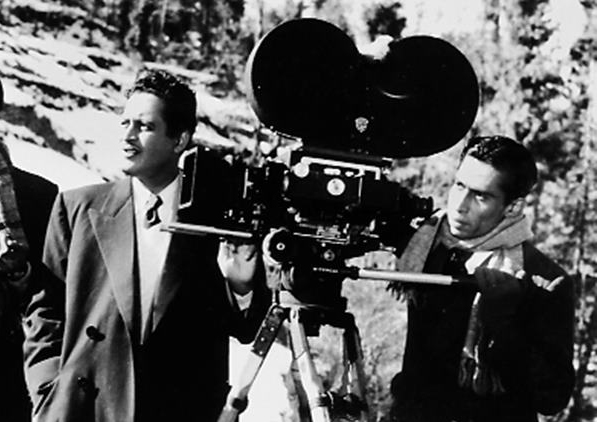
Guru Dutt with VK Murthi
Then out of the blue, I realised there is so much science in motion pictures, precision engineering in the film cameras, chemistry in the labs and even the projector was doing its bit to the mystique of the movies by flashing a frame of film twice to avoid the flicker. This was baffling, film cameras are an engineering marvel – so many parts, so many gears working precisely, stopping starting, frame after frame.
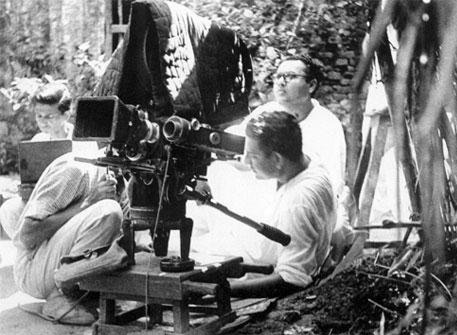
Satyajit Ray and Subrata Mitra
Most studios used Mitchell cameras; many great films in India were shot on Mitchell and continued till the sixties. Mitchell was the great American workhorse meant for shooting on shooting floors, had a complete set of registration pins and produced a great image, shutter angle could be cut during the shot but it was heavy too bulky and cumbersome.
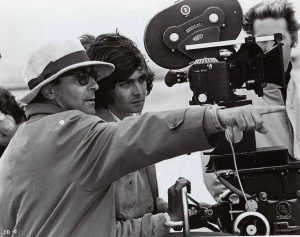
Jean-Luc Godard

A scene from Jules Et Jim
But when did things change? What was the tipping point. Using portable equipment and requiring little or no set up time. French New Wave of film-making presented a documentary style of cinema which captured the restless energy of the young, on the streets of Paris. This style had a definite impact on India cinema too.The inability of other camera manufacturers to address the design issues and solve the problem of weight and ergonomics meant that those bulky cameras were quickly consigned to only shooting special effects shots.
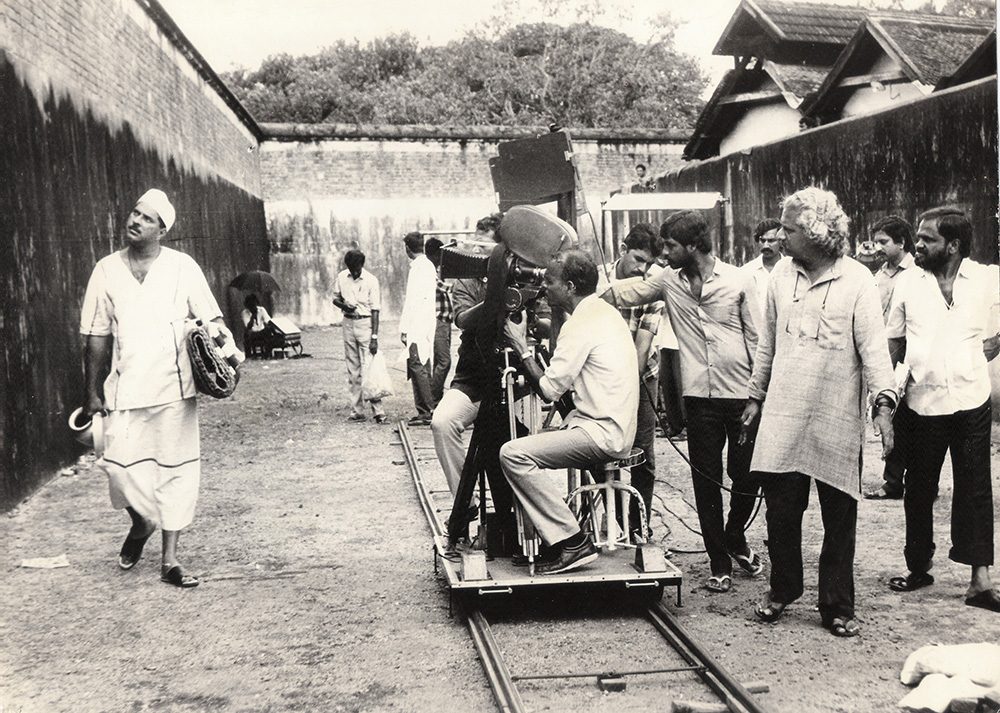
Adoor Gopalakrishnan, Mankada Ravi Varma and Mamooty shooting Mathilukal
A hallmark of German engineering excellence -Arriflex- designed for the battle field, had in a few years become the main production camera in India along with the solid Nagra recorder.
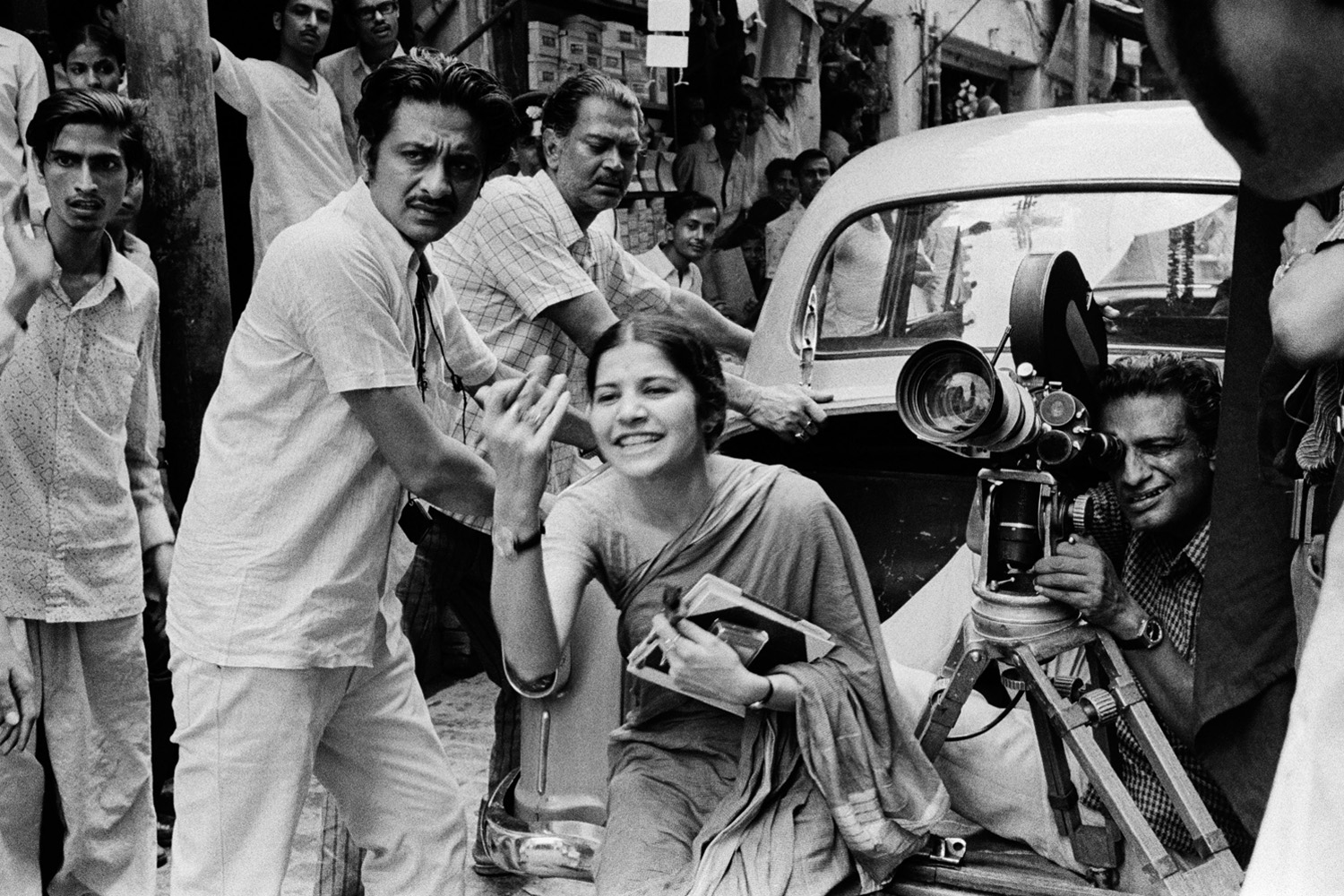
Satyajit Ray with a Arri 2c in the back of an Ambassador car
Young Creative Indian film makers found this camera, with a new reflex system, liberated them from the confines of the studios. They were able to shoot on locations with natural light, free to shoot inside cars, in the nook and corners and literally run with the camera to take hand held shots. It could survive a dunking in the sea. Arri built a reputation amongst Indian cinematographers that this is a small but sturdy camera you could trust.
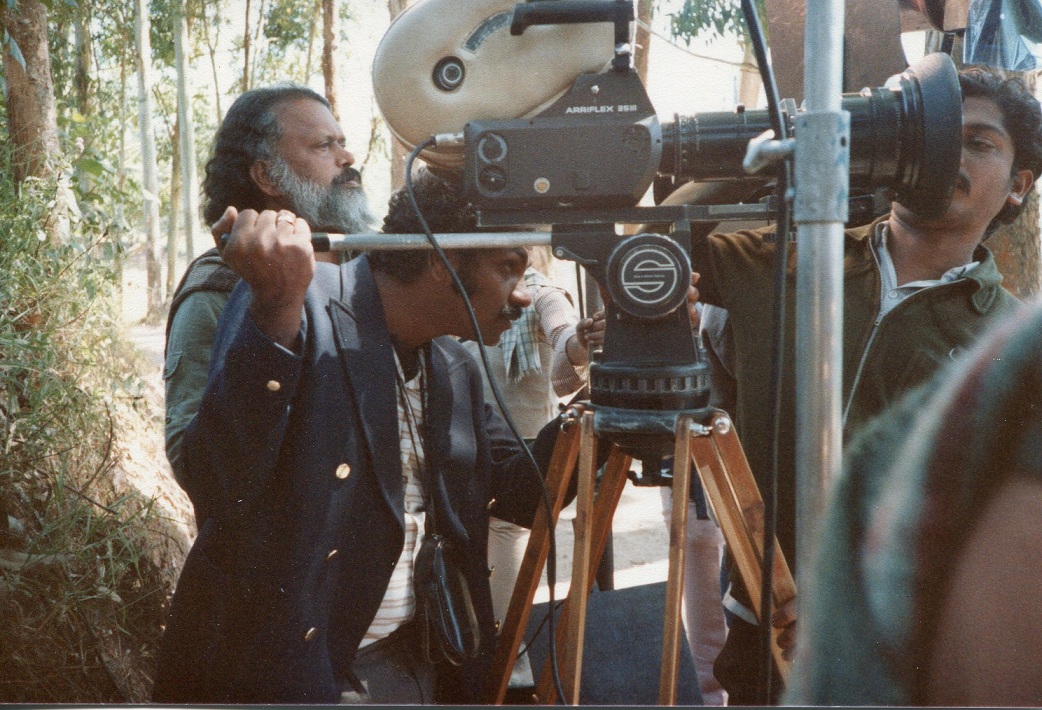
Aravindan with Shaji N Karun
In the next four decades, Arriflex continued to innovate with rotating eyepieces, brought in high-speed cameras, introduced silent camera with better registration and eventually, the combination of Kodak colour film and Arri cameras were here to stay. Labs improved and the cinematographer got used to lighting for colour film, so did the quality of Indian cinematography.
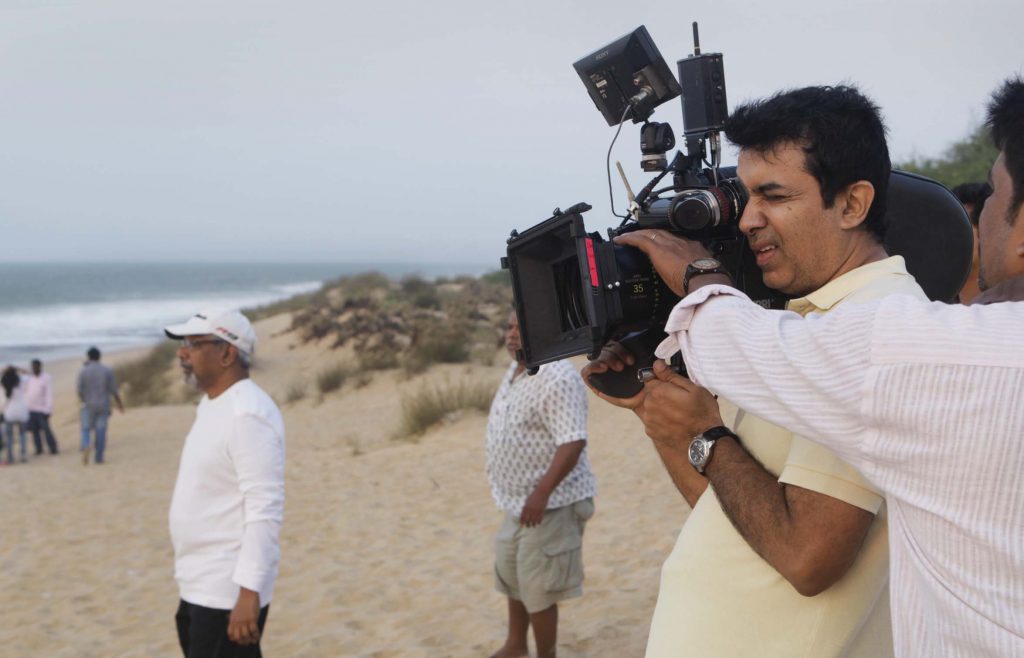
Mani Ratnam and Rajiv Menon in a shoot
But this status quo was to be challenged again and things began to change around the last decade. Digital revolution was first seen in editing and audio post-production, its use in principal photography was resisted for a while by the industry. Digital projection was making film labs and film stocks irrelevant. Kodak which pioneered digital photography perished in the analogue inferno.

Bajirao Mastani shooting in progress
Arriflex adapted. It didn’t get bogged down by the number of pixels or technical jargon but managed to create the new industry standard with superior latitude and reliability in their Alexa series of cameras.
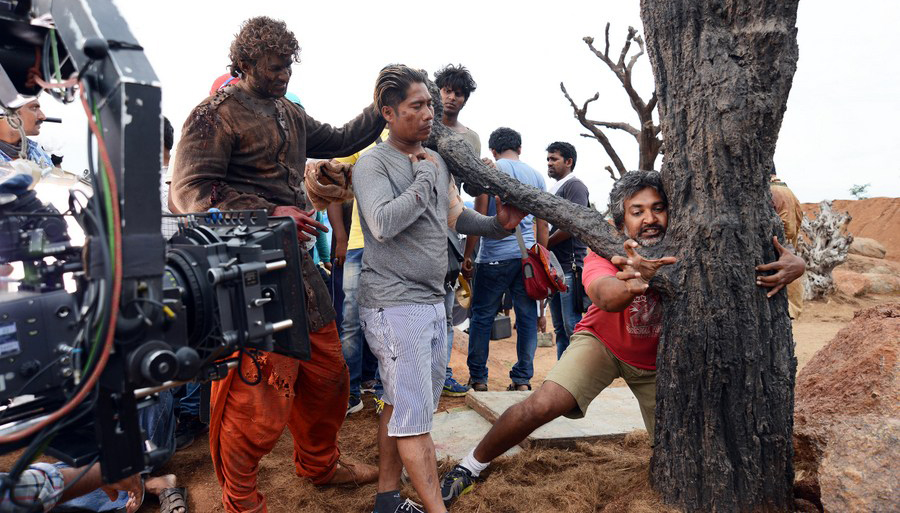
Baahubali shooting in progress
For students of cinema who have witnessed quite a few changes, it is astonishing how Arriflex has remained in the forefront of film technology.
Innovation, having a eye on the future, being flexible and adapting to the changing technology and demands of the industry is crucial for a camera manufacturing company transforming itself into a lighting company and now to a total media solution provider, thus managing to remain relevant even after hundred years.
Its difficult to explain the bond that a cinematographer has with his camera. Is it like a writer with his pen…? No… the writer could always use a typewriter or a computer. Is it like a musician with his guitar? Not really, keyboards, synthesizer and sequencer could play guitar samples.
I think it’s like a pilot going to war with a fighter plane, man and machine as a team, trusting his machine, while putting his life at risk for a larger cause. The motion picture camera helps the cinematographer soar over creative obstacles, fight battles with changing light, searing temperatures, dust, rain, storm and finally discovering the clarity of new visual horizons, capturing them and bringing them back to the audience in the glory of the darkened movie halls.
Germany may have lost the battle of Britain to Vampires and Spitfires. But seventy years later German technology dominates the world of cinematography. Arriflex with reliability, design and innovation continues its deep and personal bond with Indian Cinematographers.
Speech by Mr. Rajiv Menon at the Arri 100 Years Celebration held at Mumbai on October 2017.

…
ArriFlex
Very Interesting Blog Admin! We are also working the same Domain.
Krisshnaa Acting Academy is providing the best Acting Classes in Delhi because they have a good team of trainers and experts, which are helping talented students to achieve the best in the field of theater acting. Come and join, and fulfill your dreams.
Contact Us- 7827502559
Visit Here- https://www.krisshnaaactingacademy.com/
Unsere Filmproduktionsfirma mit Sitz im Osten Münchens bringt ein Team von erfahrenen Kameraleuten, professionellen Redakteuren und kreativen Köpfen zusammen, die jeden Tag mit viel Herzblut eine Vielzahl von Videoclips produzieren.
The connection between Indian cinematography and Arriflex is really a demonstration of the quest for greatness in filmmaking. It’s not just about innovation; it’s about the energy and devotion of Indian movie producers to recount to their accounts from the perspective of these famous cameras.
film editing courses training in hyderabad